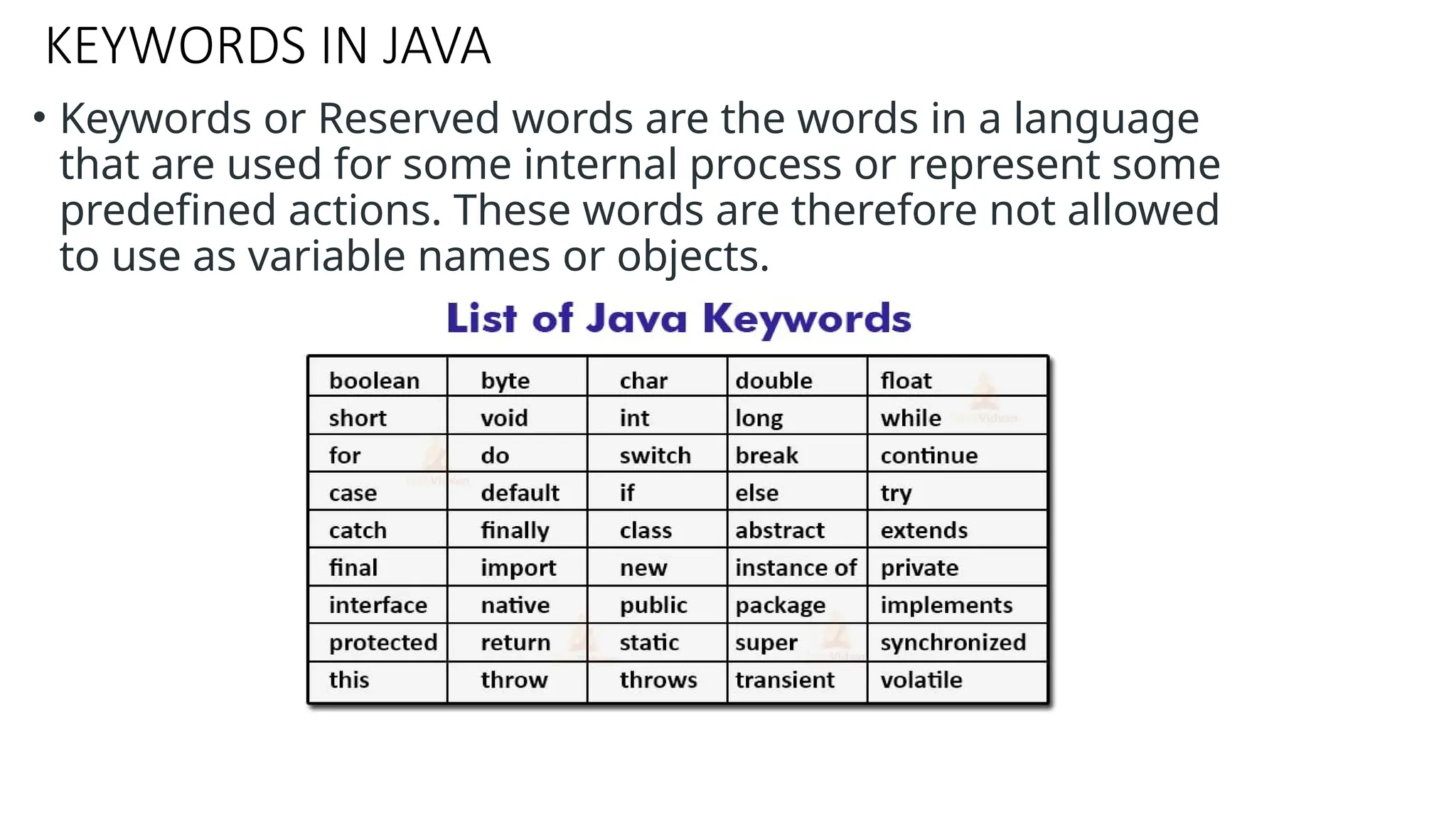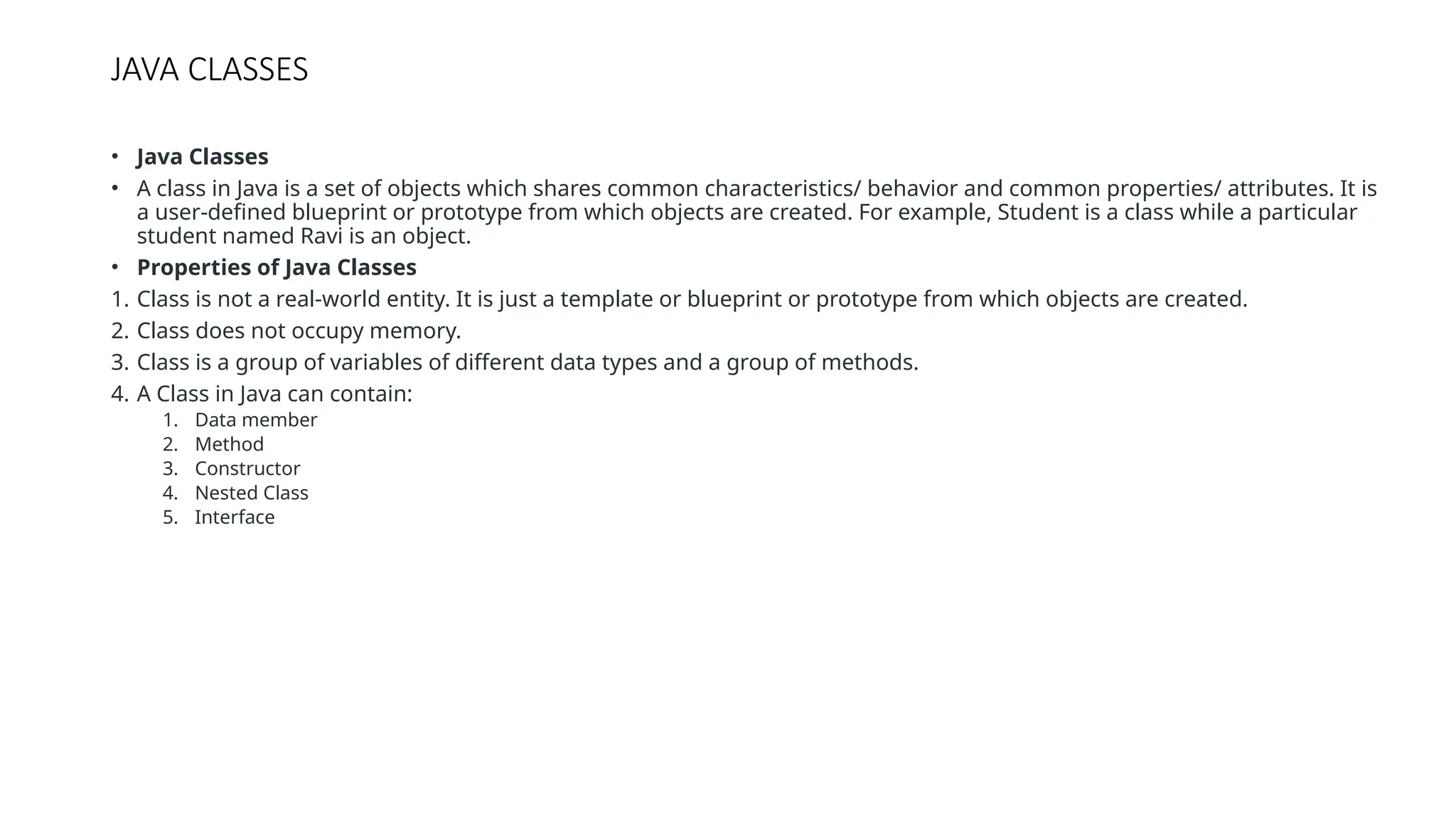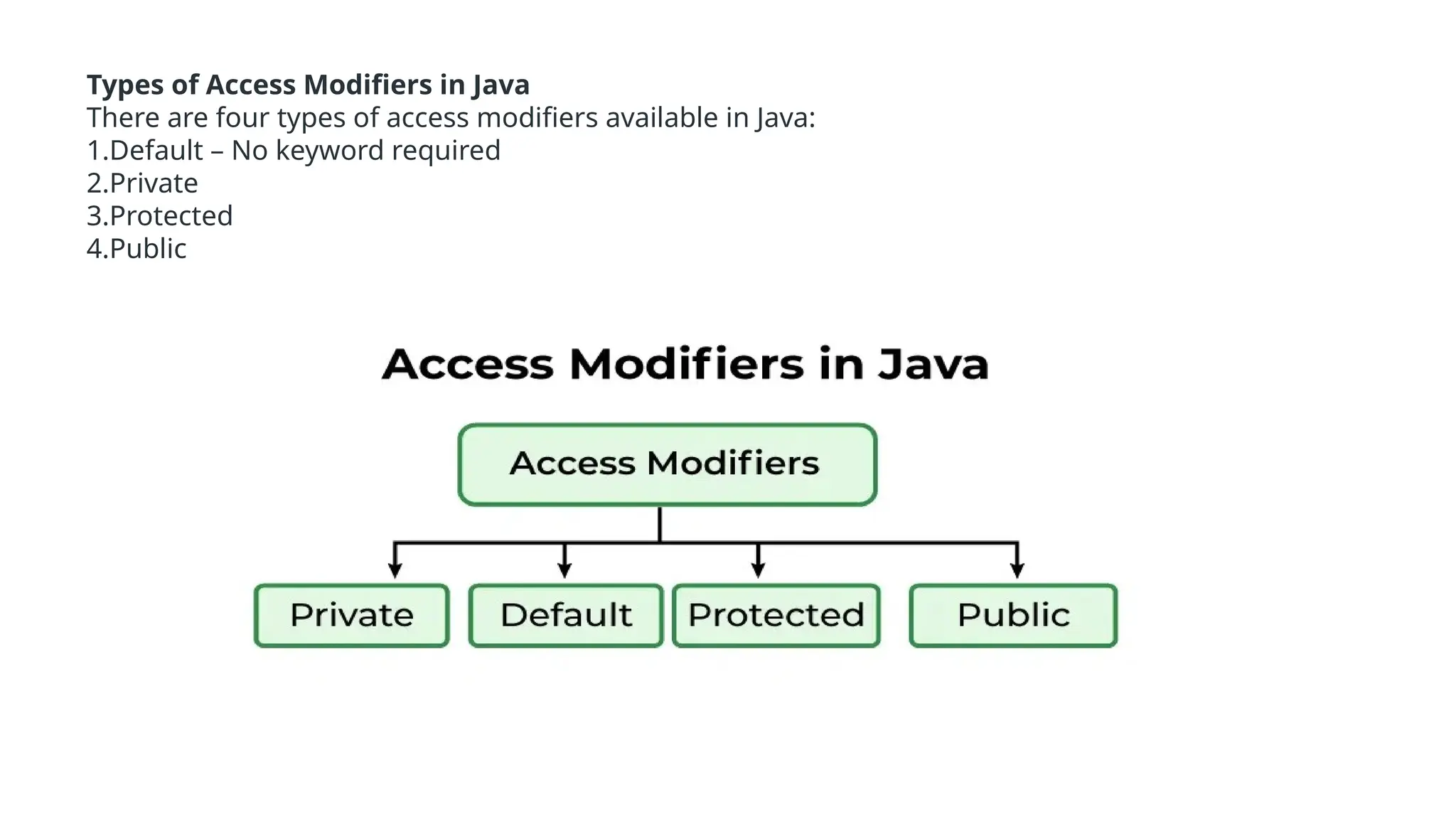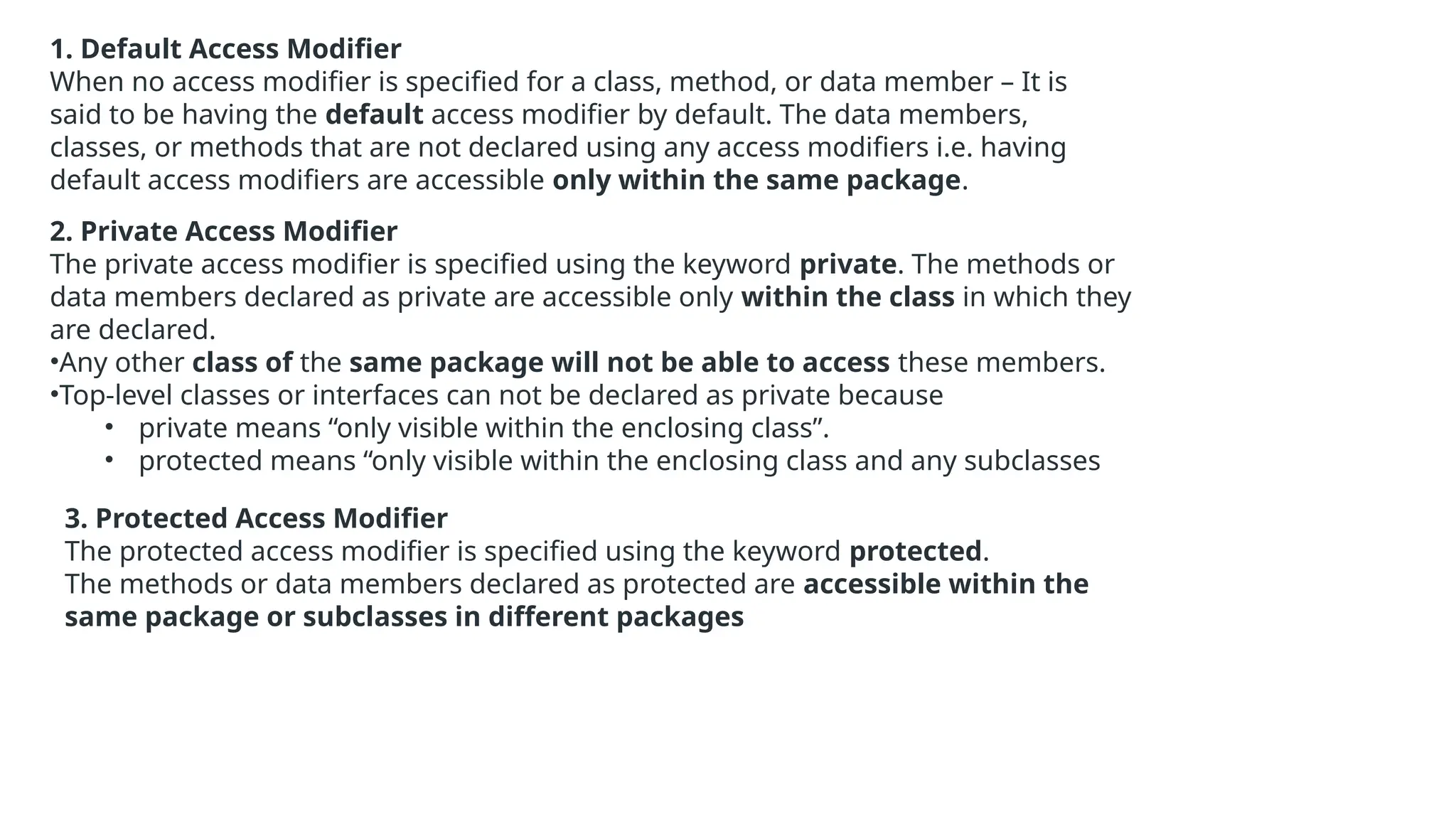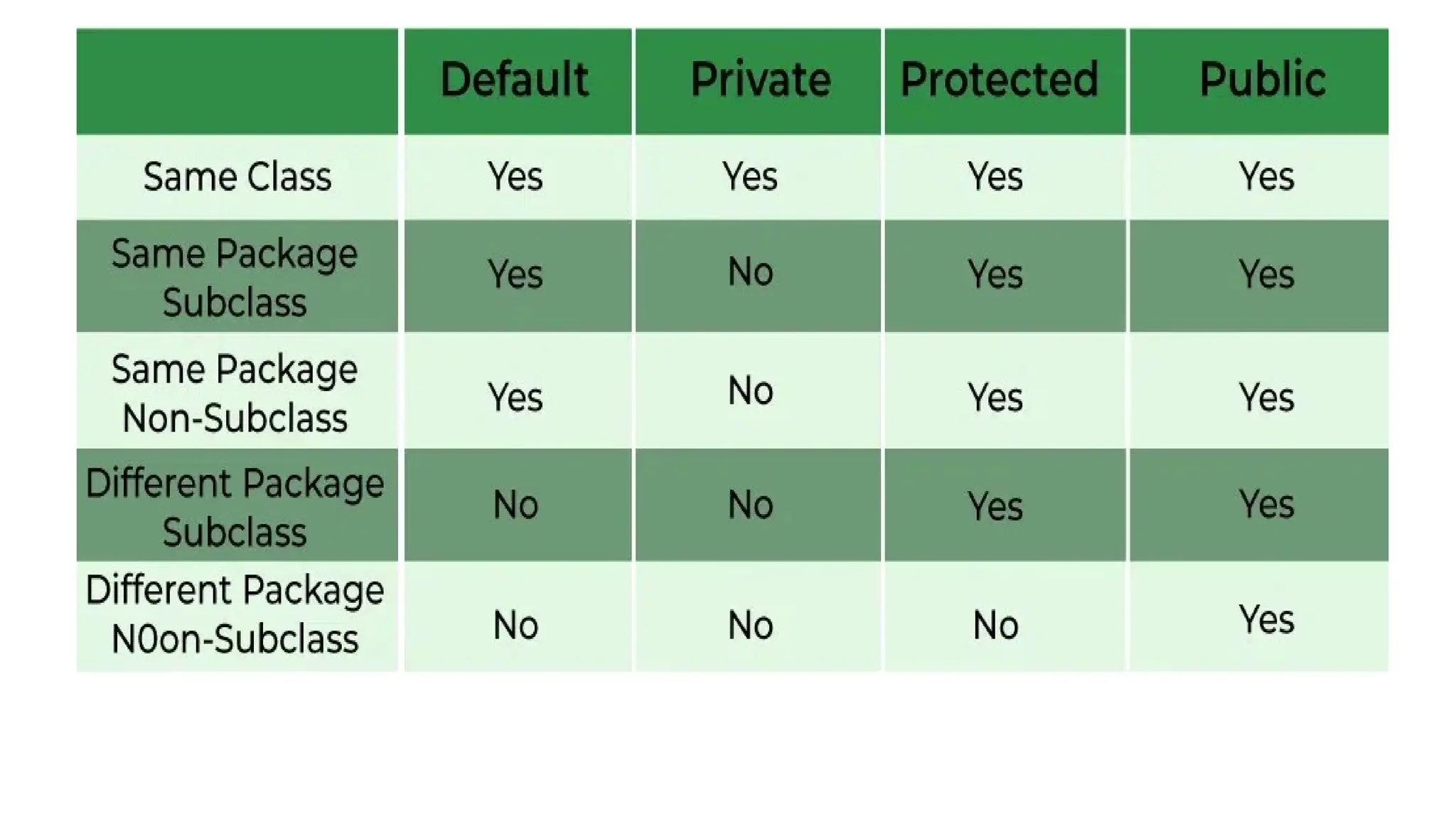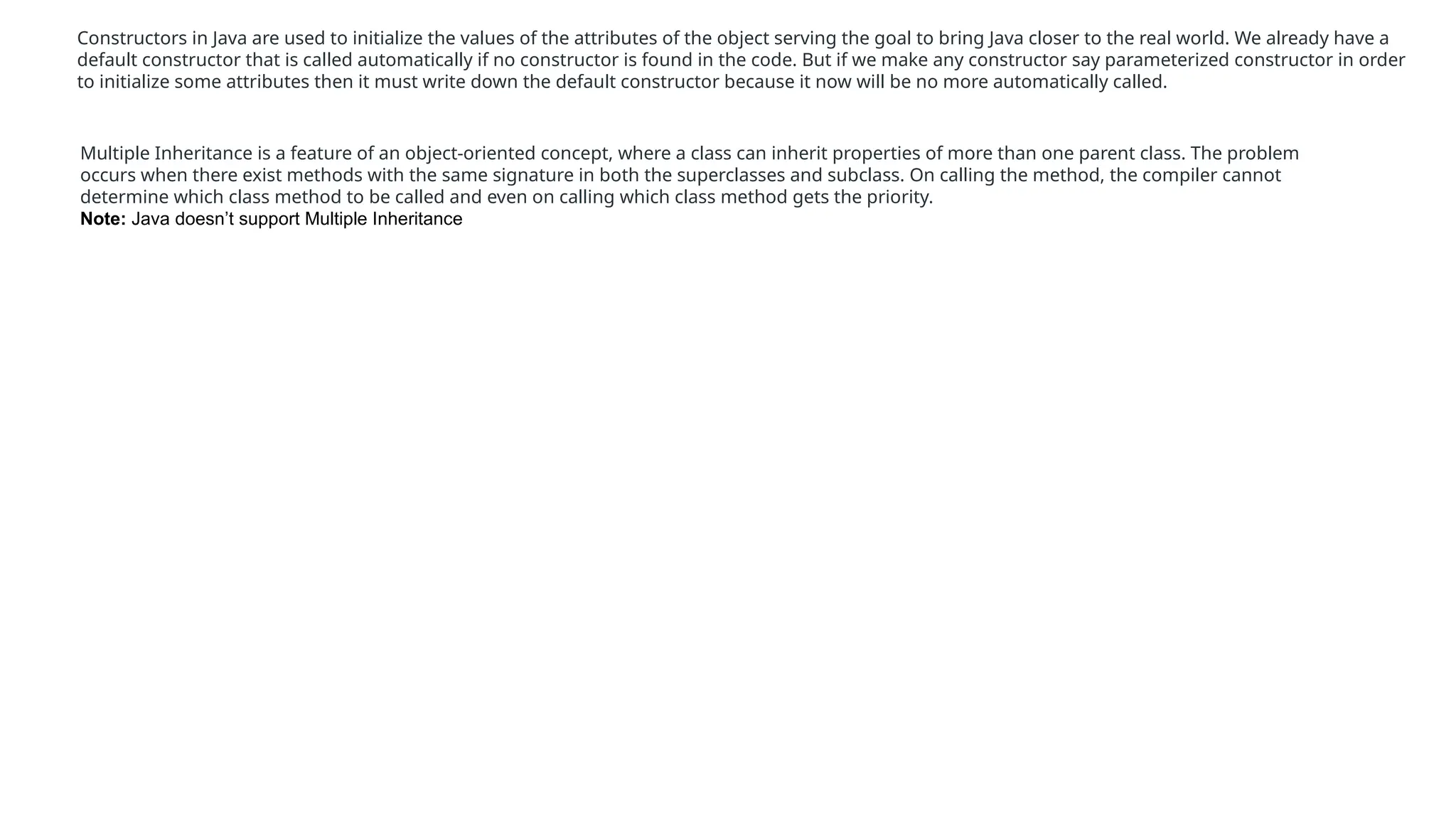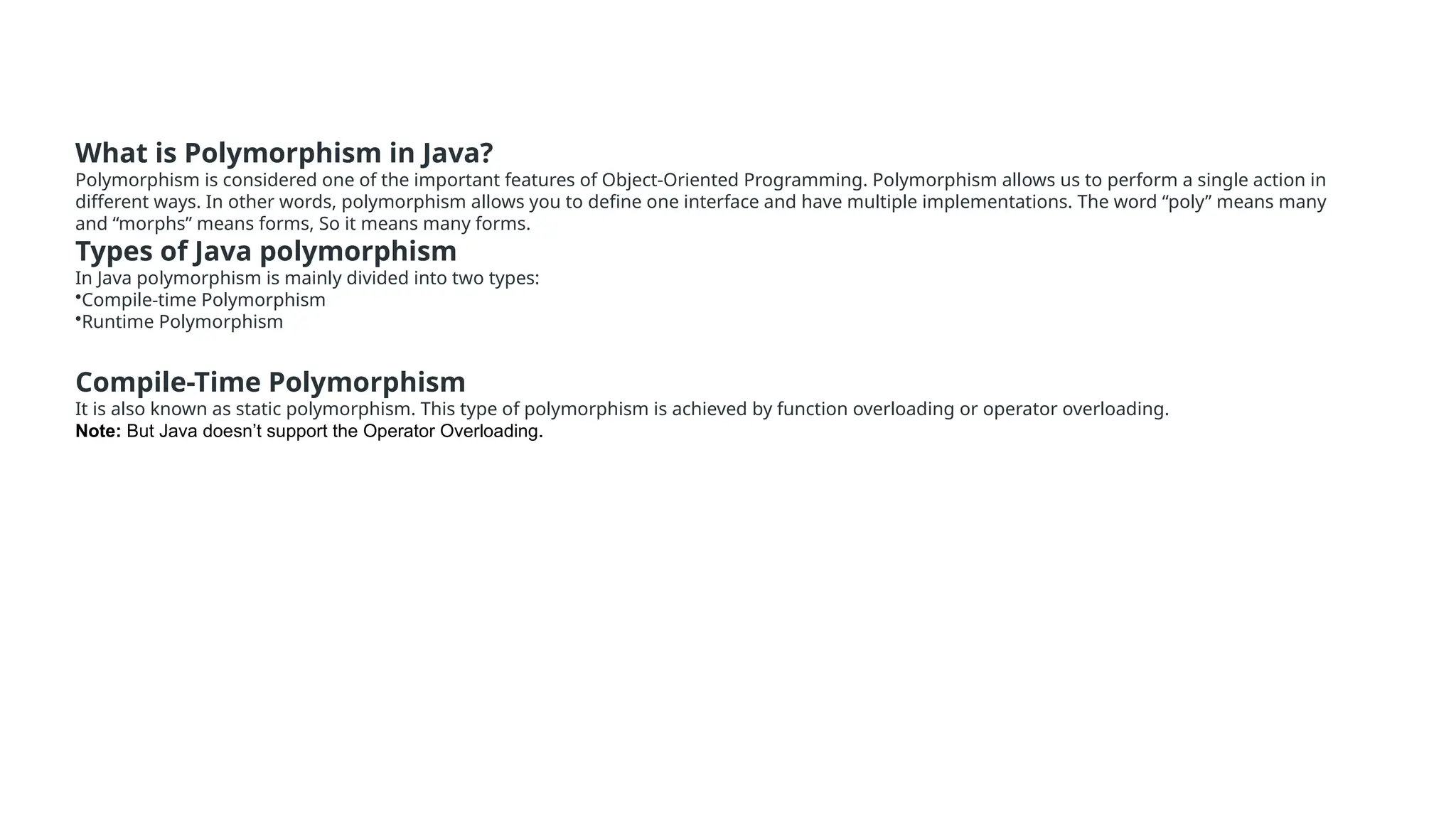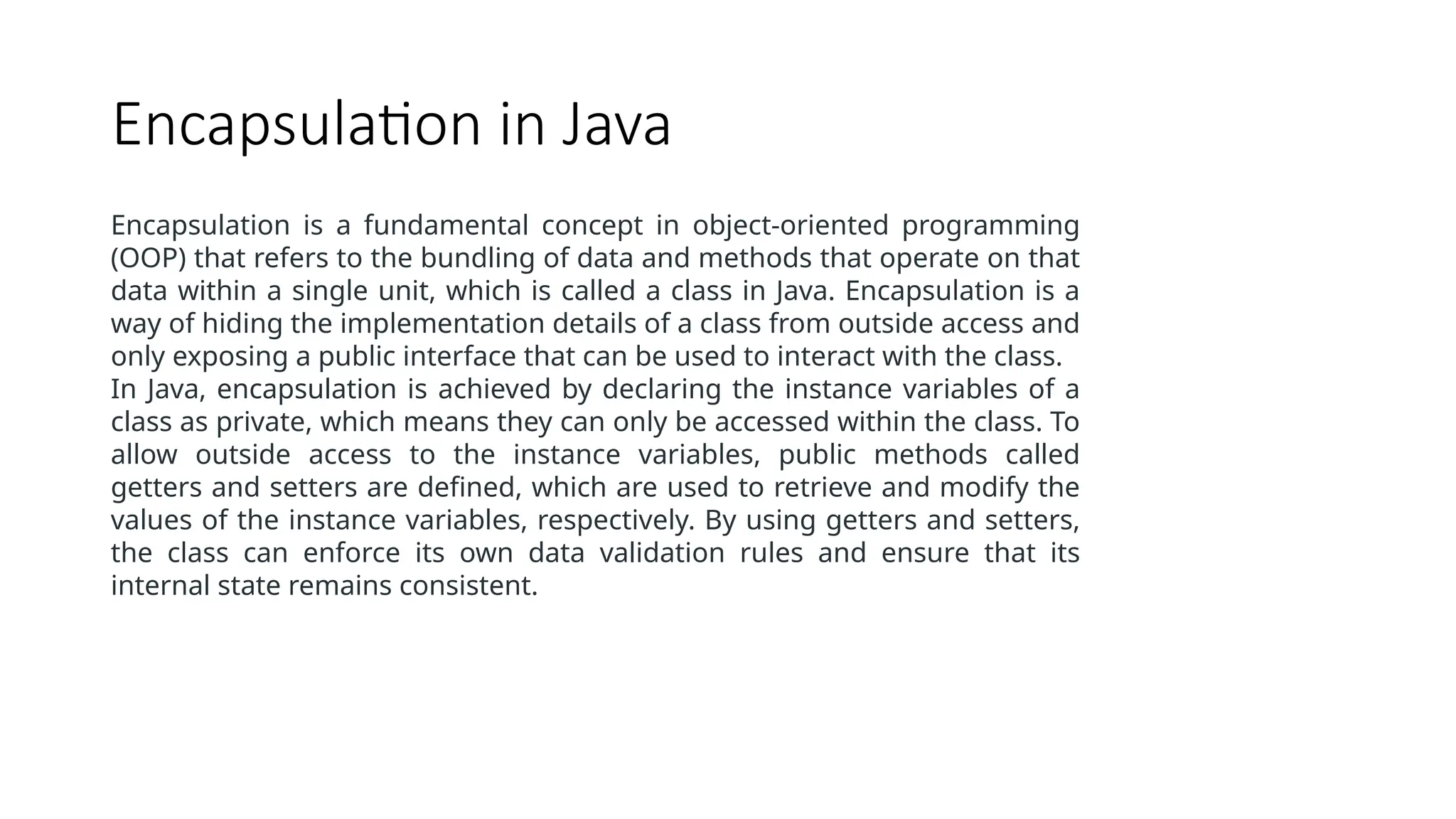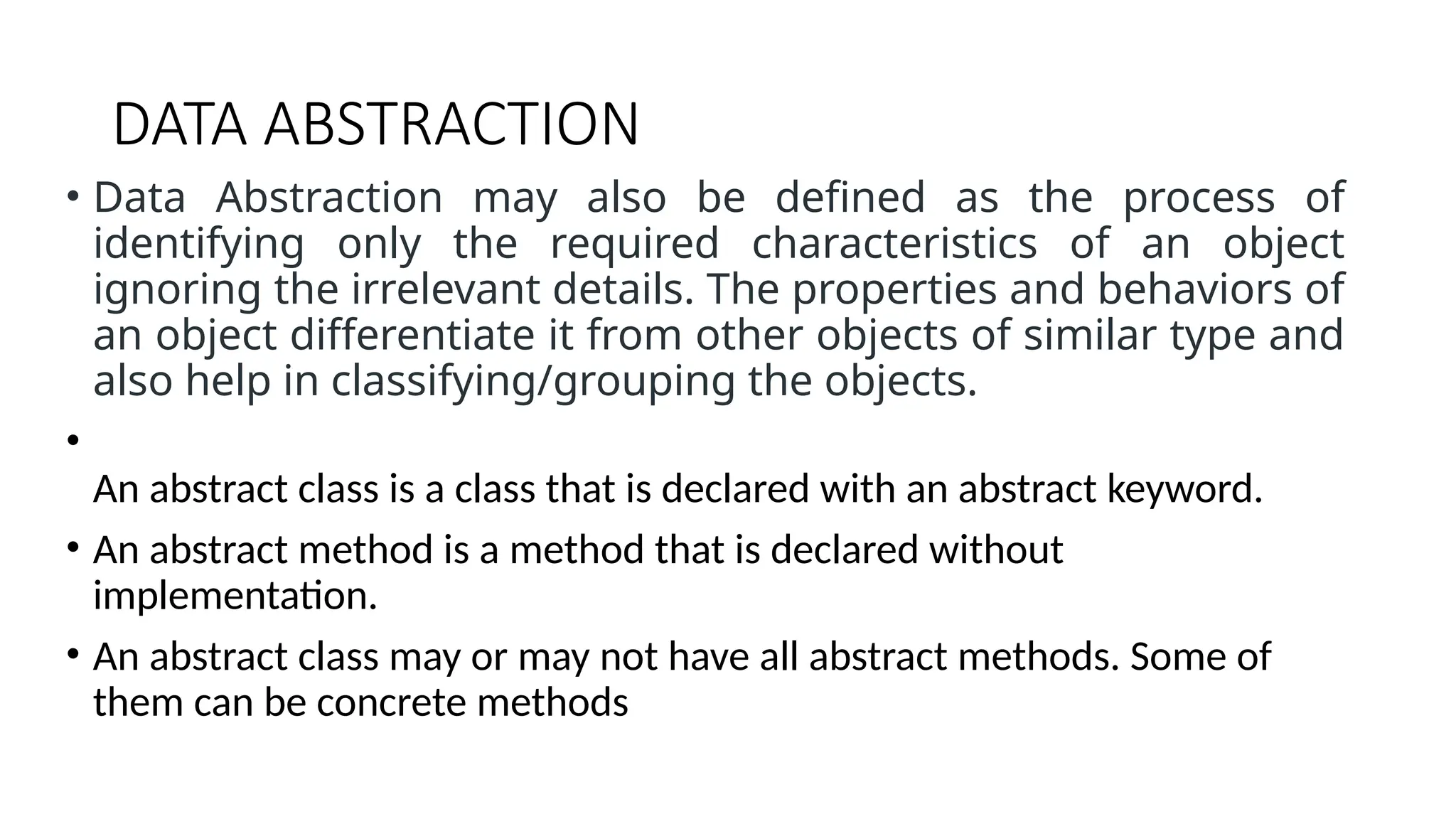Java is a widely-used, object-oriented programming language developed by James Gosling, initially released in May 1995. It supports various applications, including mobile, web, and enterprise software development, and features like encapsulation, polymorphism, and data abstraction. Key components include the Java Development Kit (JDK), Java Virtual Machine (JVM), and Java Runtime Environment (JRE), with a focus on ease of learning and dynamic array management.
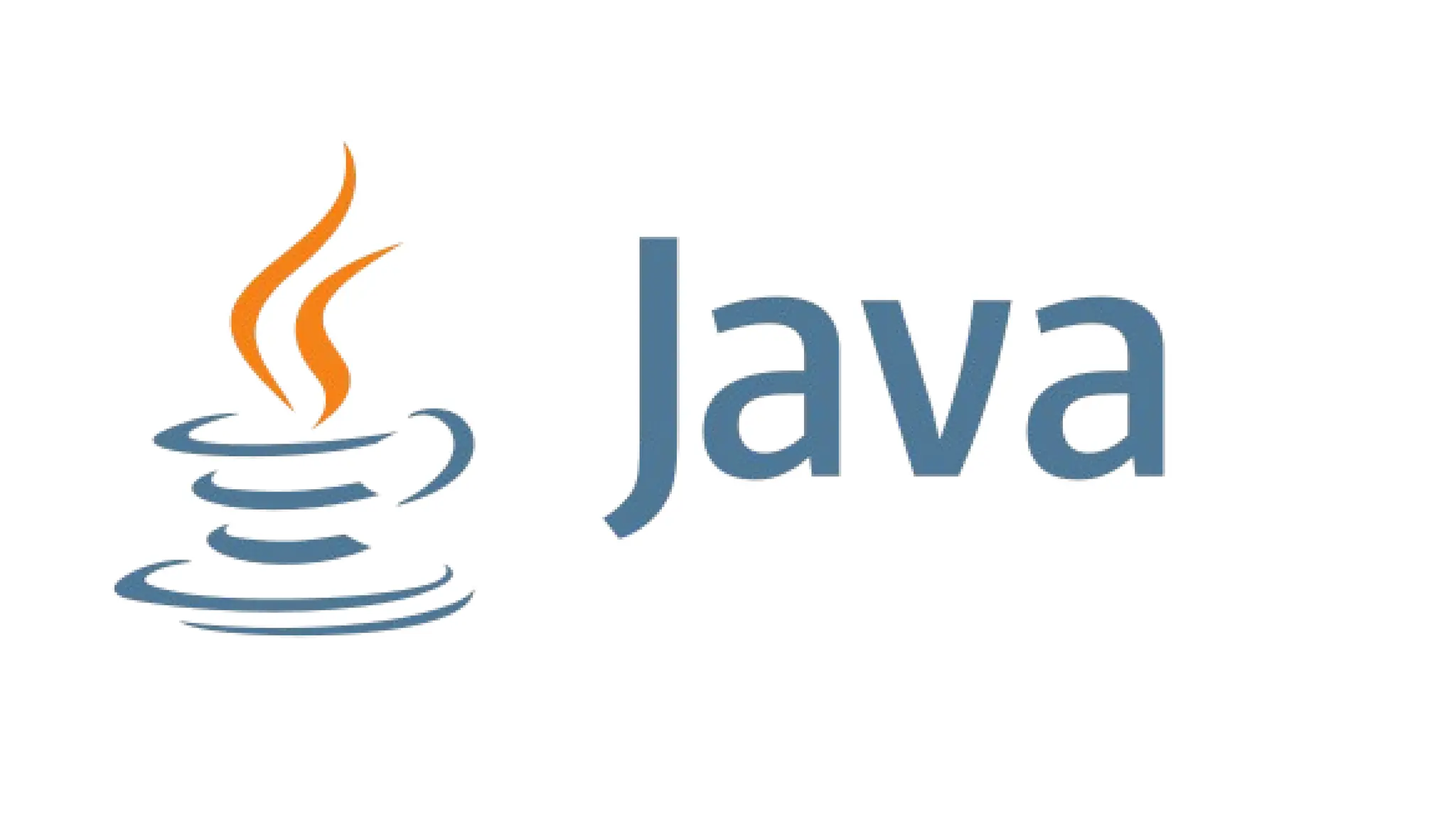
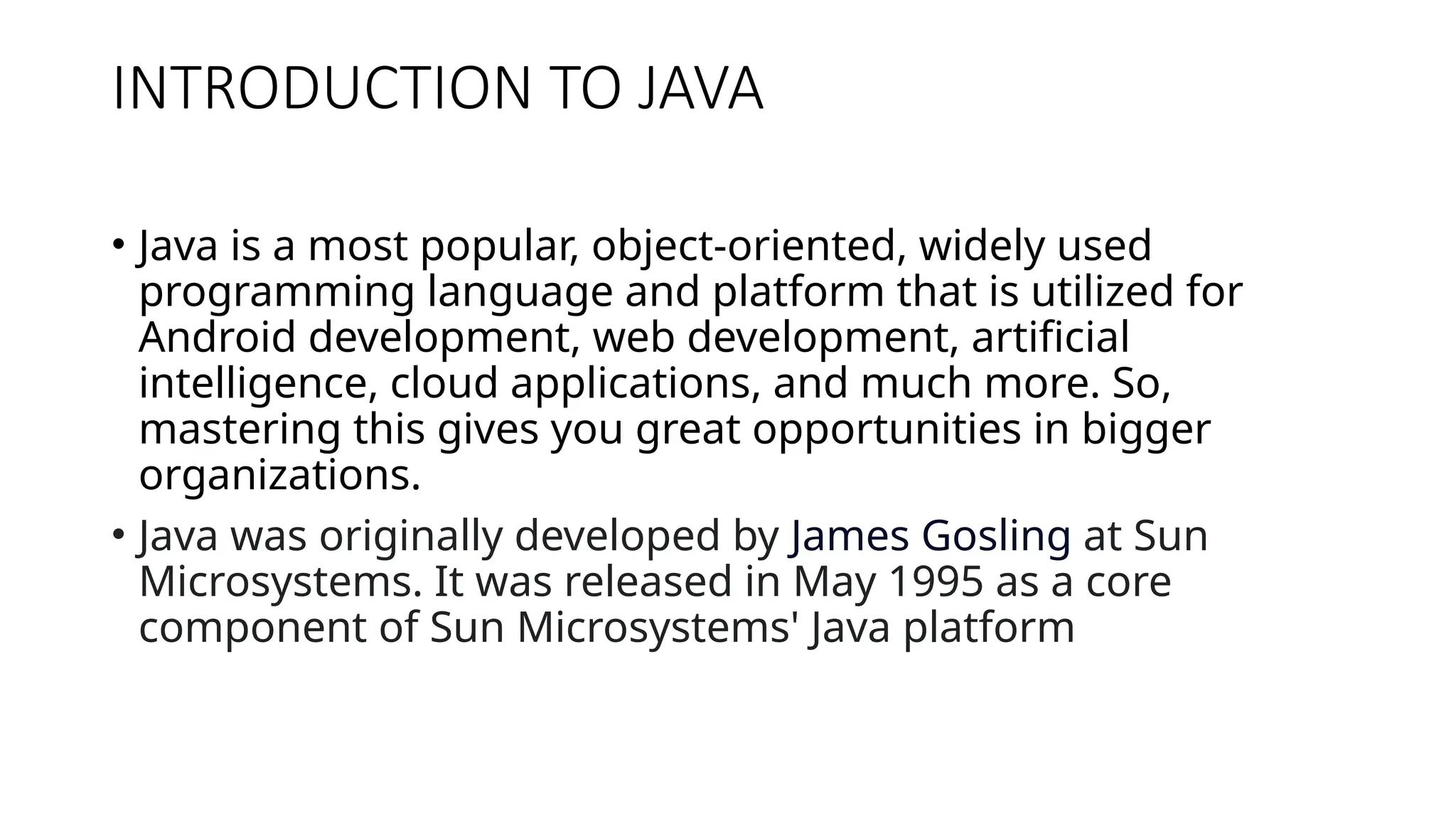
![FIRST PROGRAM OF JAVA // A Java program to print "Hello World" public class KESHAV { public static void main(String args[]) { System.out.println("Hello World"); } } Output : Hello World](https://image.slidesharecdn.com/presentation2-241107131857-2c283d07/75/Presentation2-ppt-java-basic-core-ppt-3-2048.jpg)
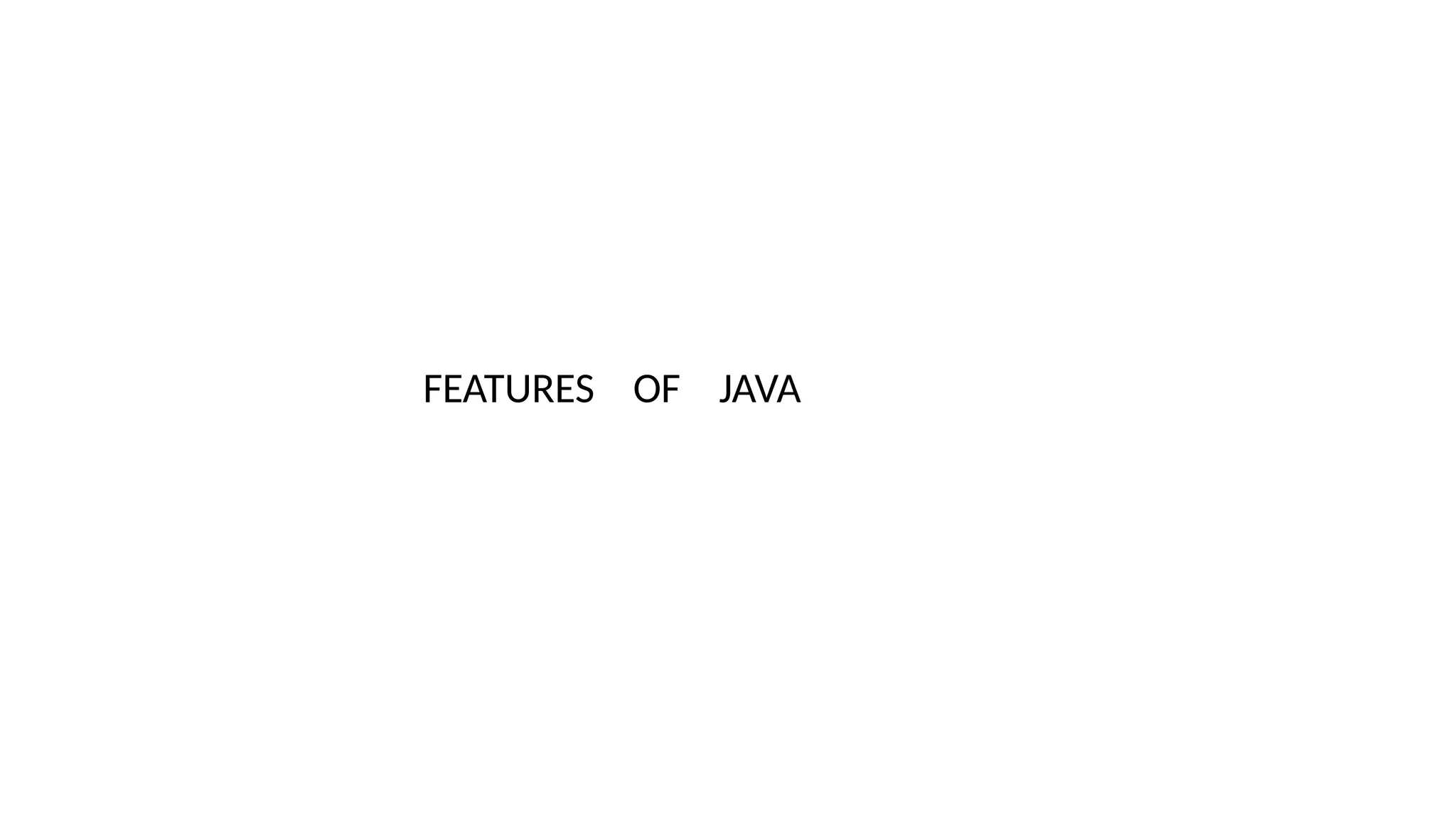
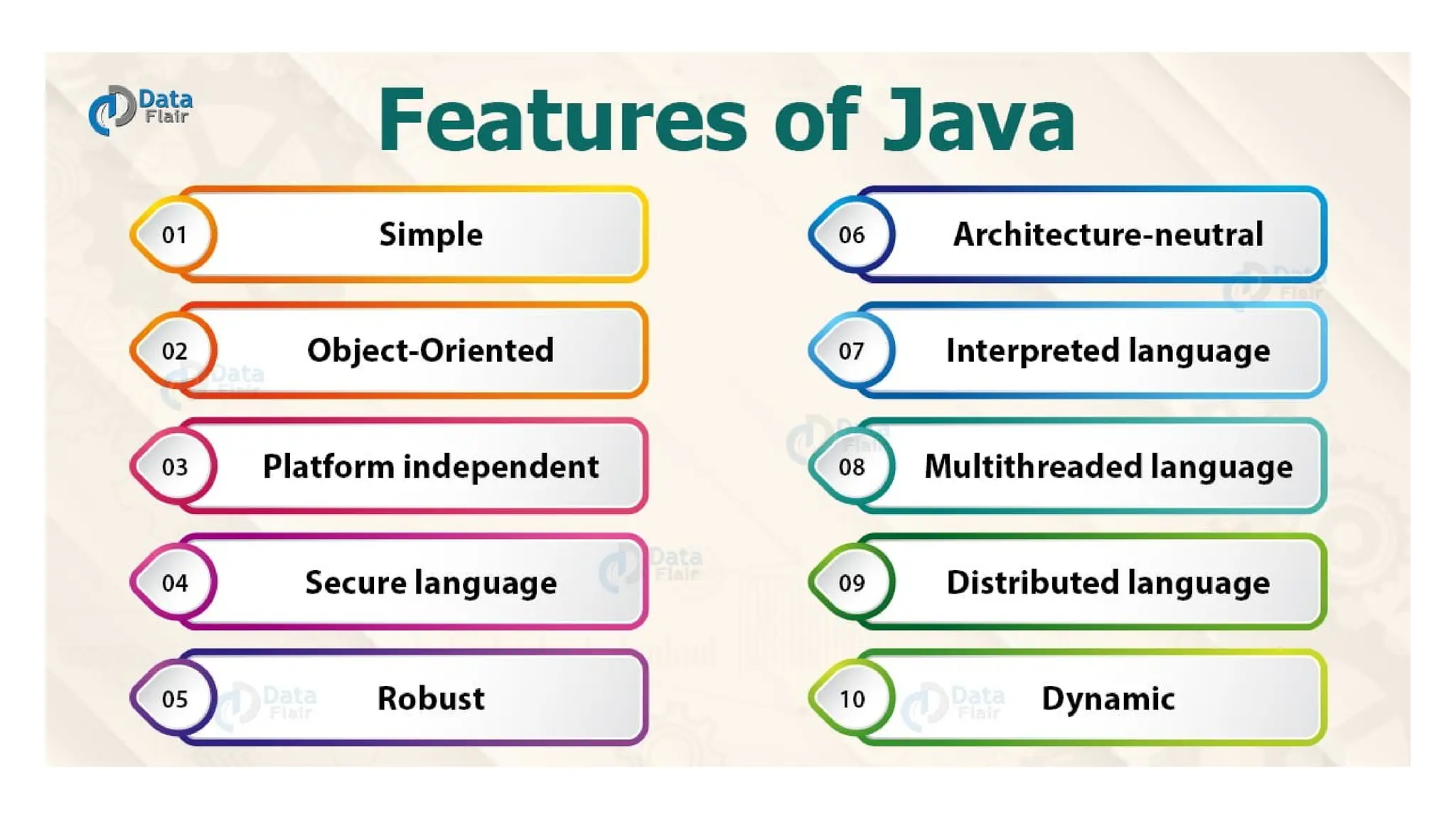
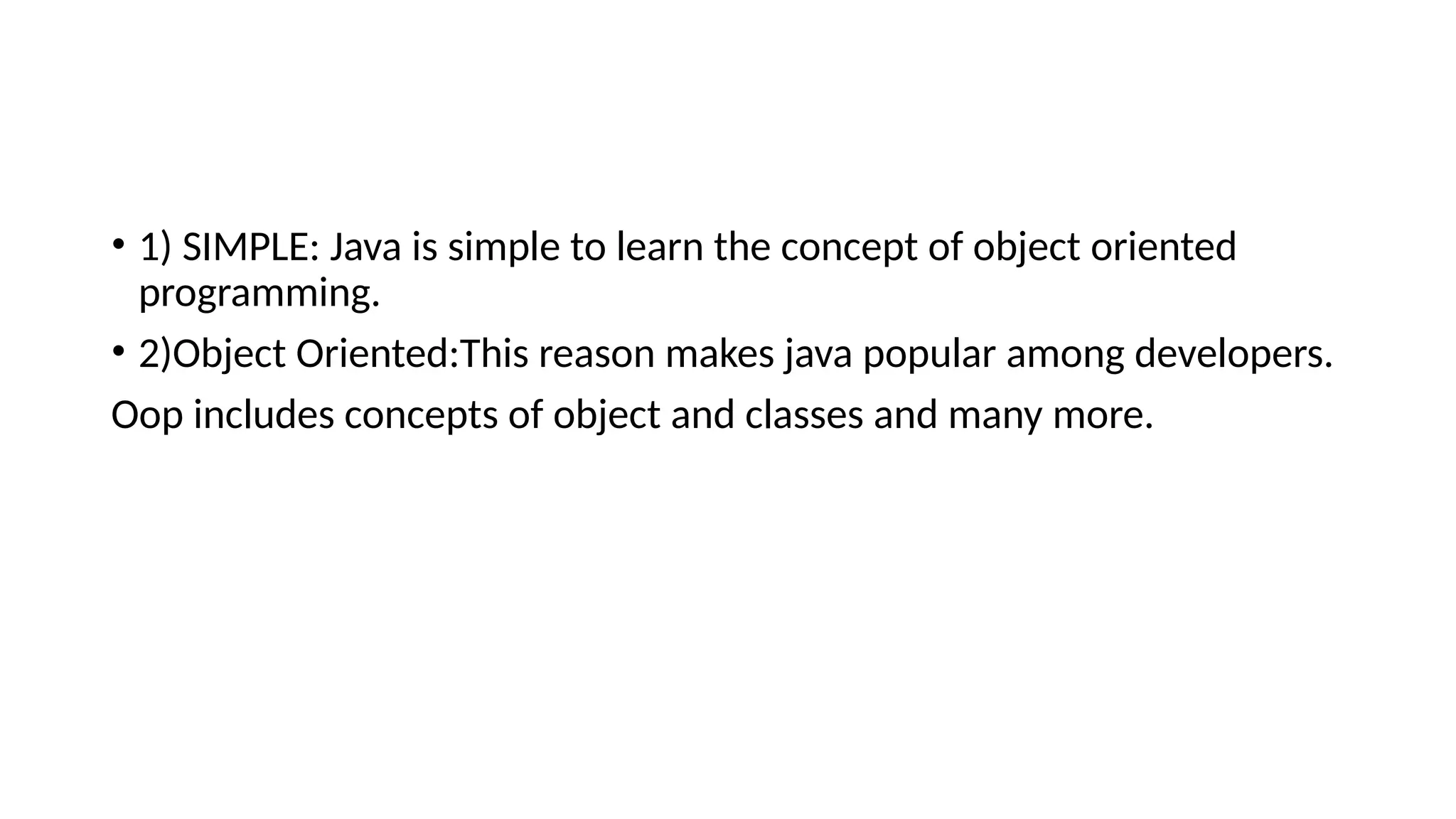
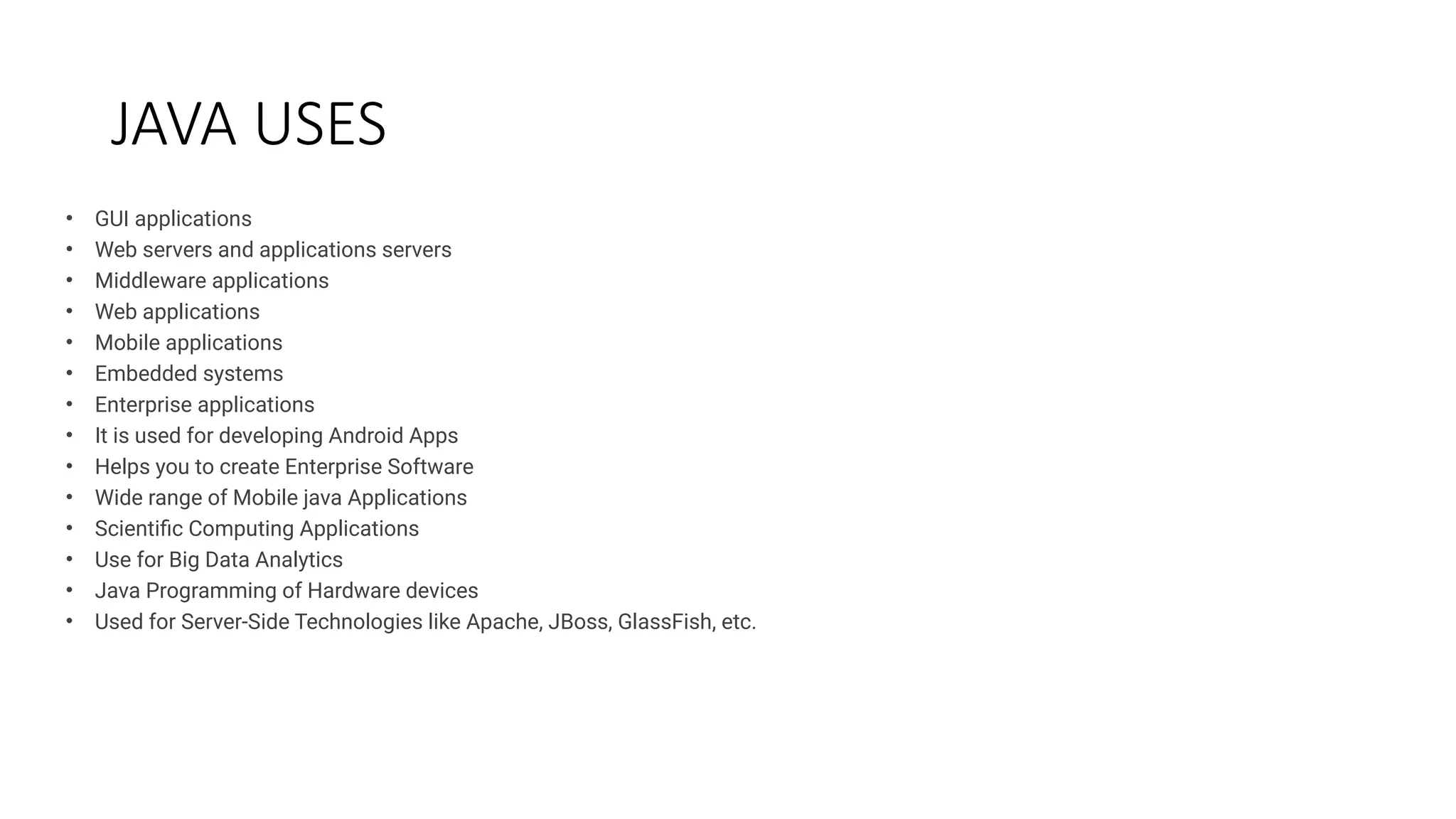
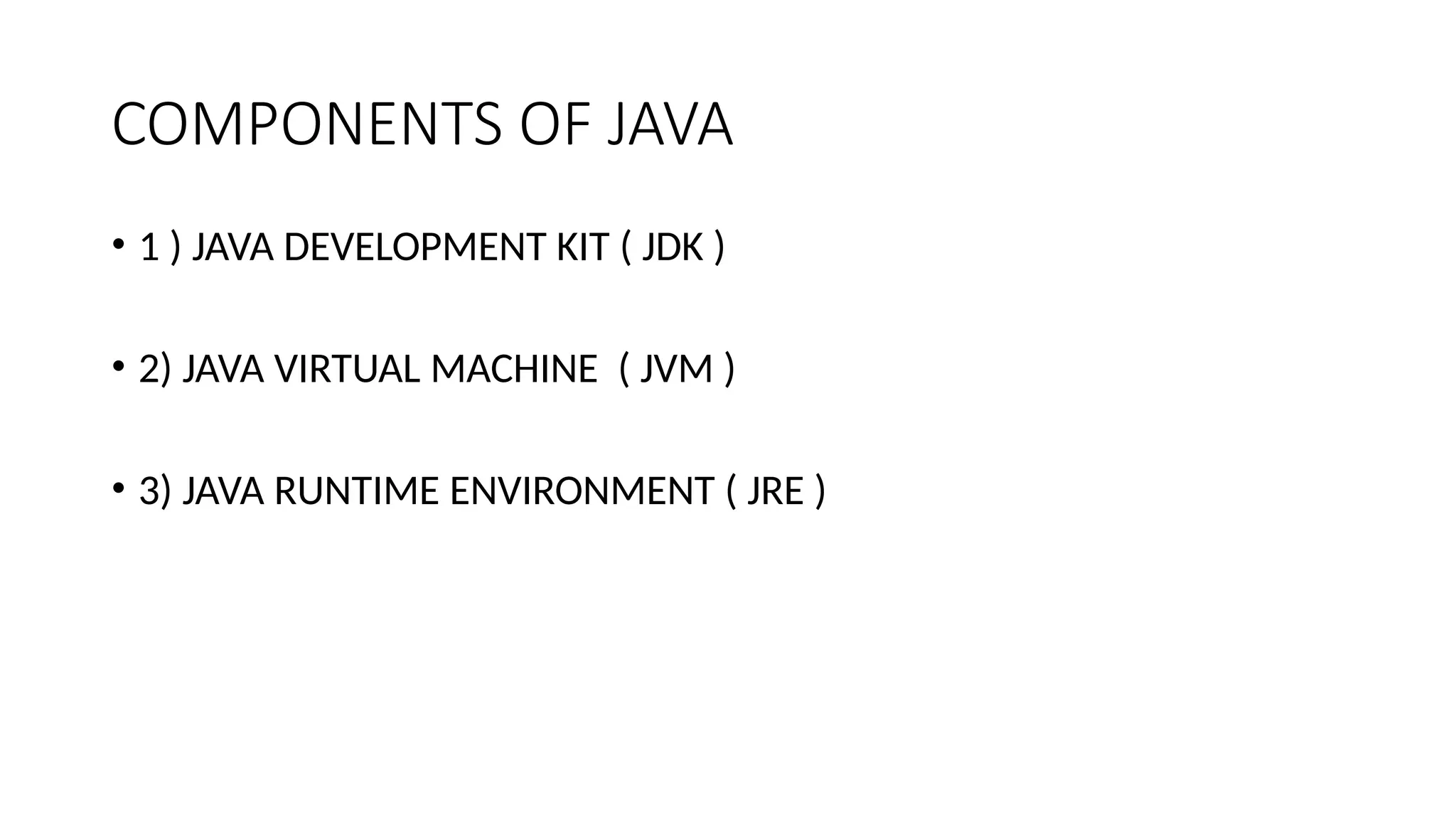
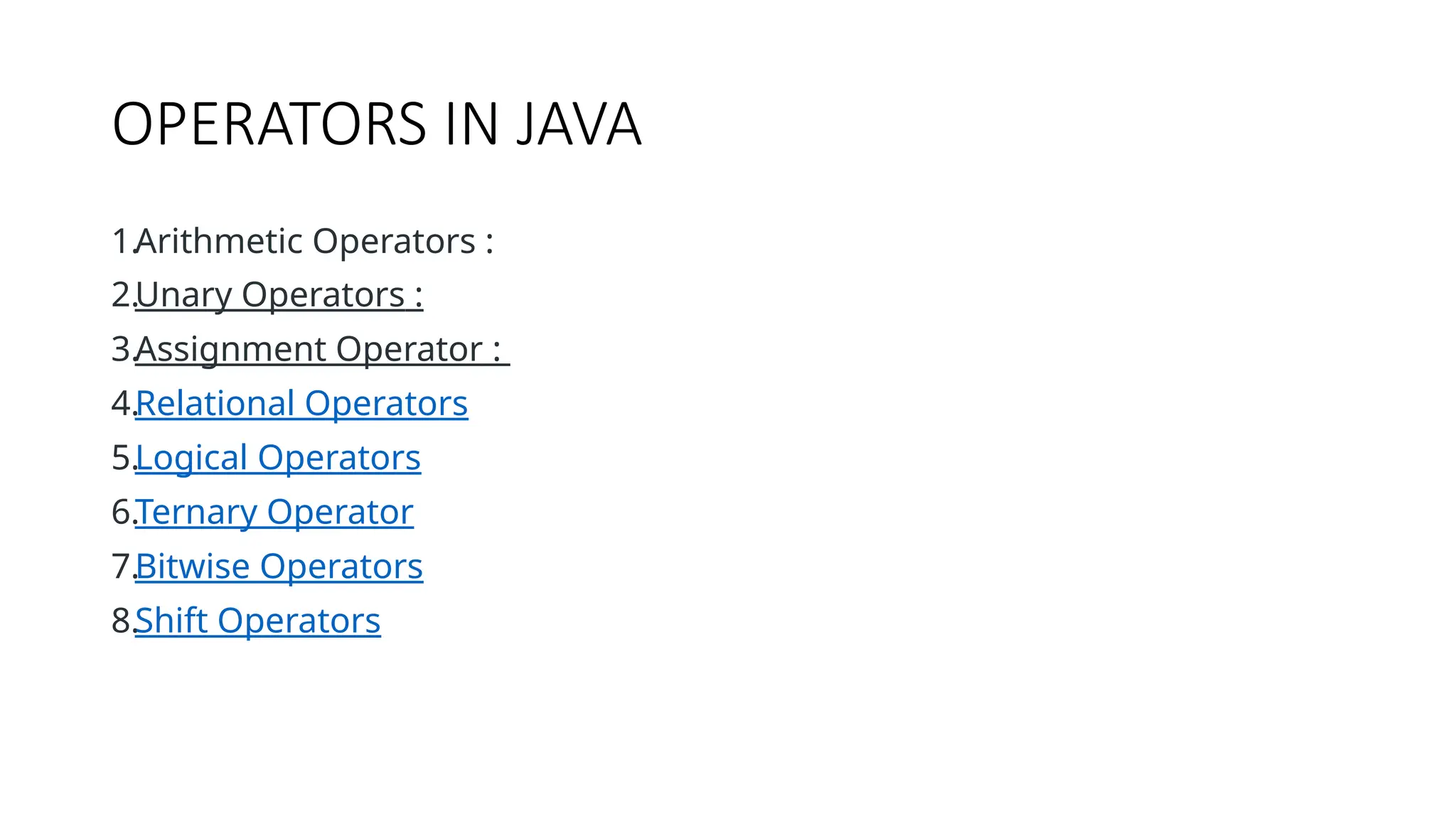
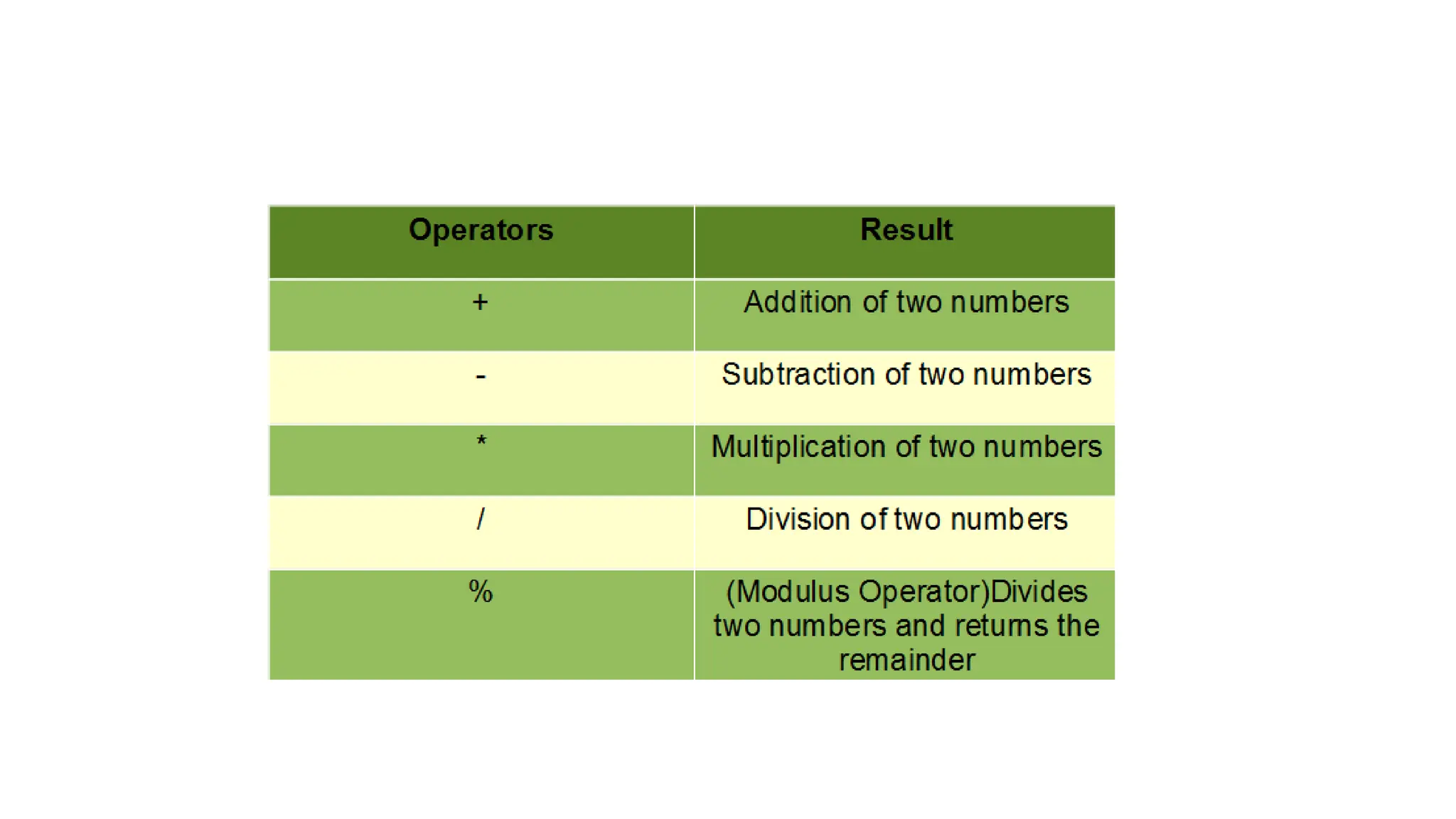
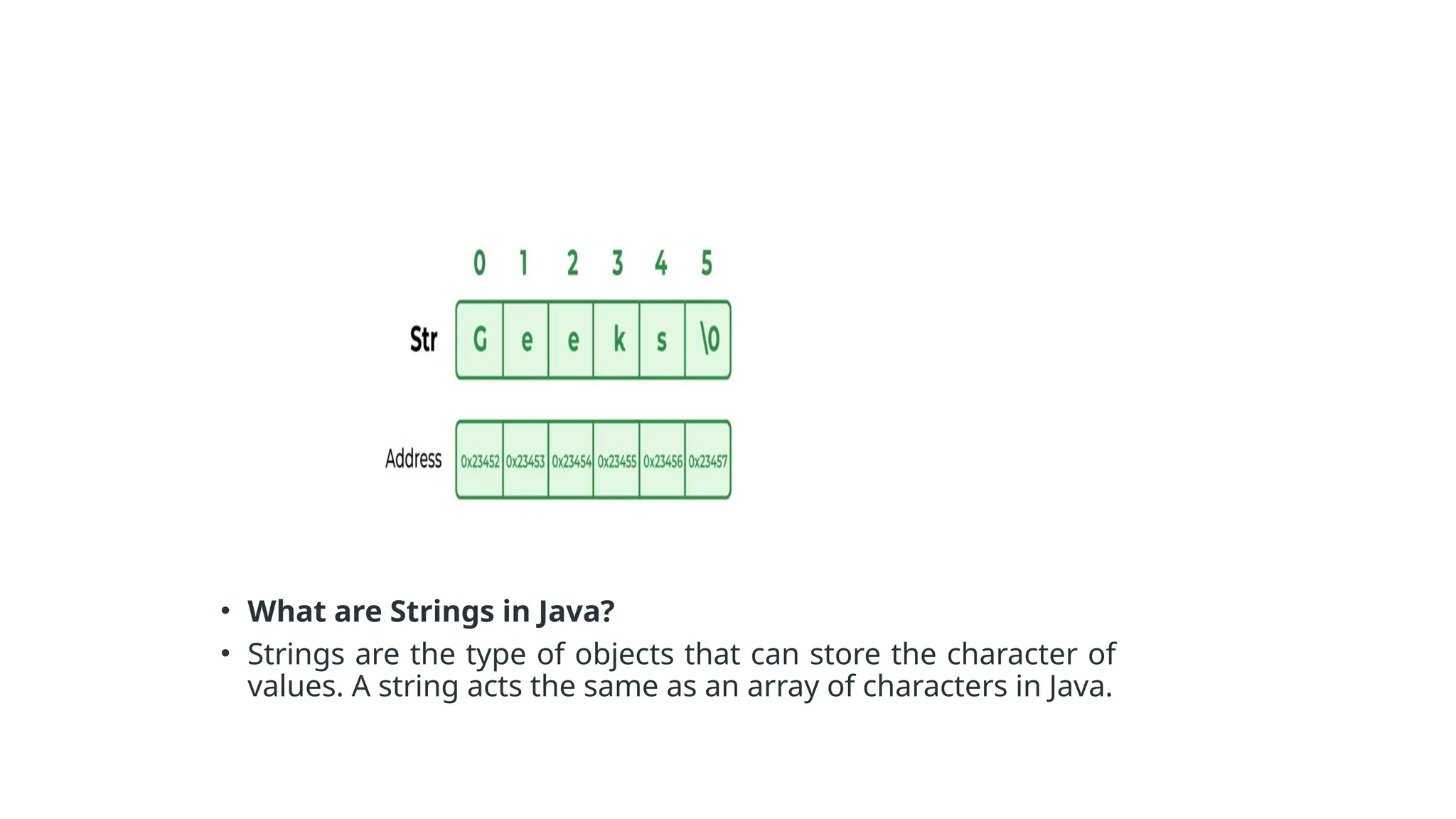
![ARRAYS IN JAVA • Array in java is a group of like-typed variables referred to by a common name. Arrays in Java work differently than they do in C/C++. Following are some important points about Java arrays. • In Java, all arrays are dynamically allocated. (discussed below) • Arrays are stored in contiguous memory [consecutive memory locations]. • Since arrays are objects in Java, we can find their length using the object property length. This is different from C/C++, where we find length using sizeof. • A Java array variable can also be declared like other variables with [] after the data type. • The variables in the array are ordered, and each has an index beginning with 0. • Java array can also be used as a static field, a local variable, or a method parameter. • The size of an array must be specified by int or short value and not long. • The direct superclass of an array type is Object. • Every array type implements the interfaces Cloneable and java.io.Serializable. • This storage of arrays helps us randomly access the elements of an array [Support Random Access]. • The size of the array cannot be altered(once initialized). However, an array reference can be made to point to another array. The general form of a one-dimensional array declaration is type var-name[]; OR type[] var-name;](https://image.slidesharecdn.com/presentation2-241107131857-2c283d07/75/Presentation2-ppt-java-basic-core-ppt-12-2048.jpg)
